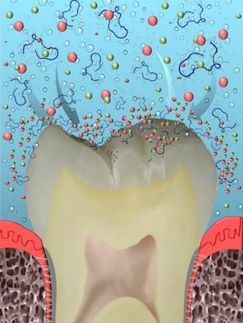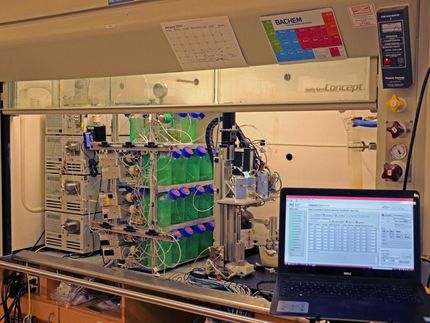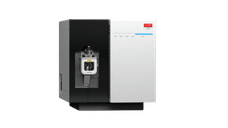Proteome atlas for the tuberculosis pathogen
Advertisement
Photographers know the problem all too well: with the naked eye, you can see which branch a bird is sitting on, but spotting the bird in the blur of branches through the telephoto lens for high-magnification images requires considerable skill. It is a similar story for researchers who are looking to study proteins, the active biomolecules of cells.
Olga Schubert, a doctoral student at ETH Zurich's Institute for Molecular Systems Biology, and her colleagues have now come up with a search aid. In order to help scientists to find a particular protein in the jumble of all other proteins (the proteome), they have produced a proteome atlas for the tuberculosis pathogen Mycobacterium tuberculosis.
Like finding a needle in a haystack
Instead of a camera, scientists use a so-called mass spectrometer to measure proteins, which enables them to either record the overall image of the proteome or zoom in on particular sections to measure individual proteins precisely. However, for Selected Reaction Monitoring (SRM) – close-ups with a telephoto lens – researchers have to feed coordinates into the mass spectrometer so that it can find the selected protein in the tangle of thousands of other proteins.
Until now, scientists have had to determine the SRM coordinates for every single protein themselves, for instance when they want to study a specific biological process in the Mycobacterium. Schubert and her colleagues have made the search for the proverbial needle in a haystack easier by determining the coordinates for all the proteins of the tuberculosis pathogen. Using this new "reference work", scientists can now directly zoom in on the right spot on the proteome map.
97% of all tuberculosis proteins covered
In order to produce this resource, the team of researchers initially analysed the entire tuberculosis proteome. In doing so, they cut the proteins isolated from the Mycobacterium into many small pieces, so-called peptides, and measured them using the mass spectrometer. For every protein, they then singled out representative peptides that produced the clearest signal. They synthesised over 17,000 peptides in all and produced SRM measurement profiles for every individual piece of protein, thereby covering around 97 % of the roughly 4,000 tuberculosis proteins described. The key data of these profiles now serve as a guide to aid other scientists in finding every single protein of the pathogen.
With their overall analysis of the proteome, Schubert and her colleagues achieved such a high resolution that they even discovered previously unknown proteins, managing to add twenty-two new ones to the list of tuberculosis proteins. "Although the genome sequence of the mycobacterium has long been known, we haven't been able to decode the entire proteome yet," explains Schubert.
May aid new therapies and early detection
Researchers focus on the proteins of pathogens as they constitute the main target for new medication. Tuberculosis is still regarded as a dangerous disease, especially for patients with a weakened immune system, and multi-resistant strains of the bacteria that no longer respond to medication are increasingly becoming a problem. The classic search for new pharmaceutical products by combing through known substances for an antibacterial agent has not been as successful as expected. Scientists hope that basic research will produce results that might uncover new weak points for medication to attack. The tuberculosis proteome atlas could go a long way towards achieving this.
The coordinates recorded in it are so specific that tuberculosis proteins could also be traced in a complex mixture of proteins, such as in a patient blood or tissue sample. As a result, this data could also help researchers to develop better diagnostic methods to detect an infection as early as possible.
Researchers under Ruedi Aebersold, professor of molecular systems biology at ETH Zurich and the University of Zurich, have already produced a similar proteome atlas for the model organism yeast. Other organisms, especially pathogens, could follow suit and aid the development of new treatments.
Original publication
Other news from the department science
These products might interest you
Most read news
More news from our other portals
See the theme worlds for related content
Topic World Mass Spectrometry
Mass spectrometry enables us to detect and identify molecules and reveal their structure. Whether in chemistry, biochemistry or forensics - mass spectrometry opens up unexpected insights into the composition of our world. Immerse yourself in the fascinating world of mass spectrometry!

Topic World Mass Spectrometry
Mass spectrometry enables us to detect and identify molecules and reveal their structure. Whether in chemistry, biochemistry or forensics - mass spectrometry opens up unexpected insights into the composition of our world. Immerse yourself in the fascinating world of mass spectrometry!





























































